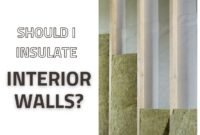If you want to keep your garage comfortable year-round, insulating your garage ceiling is essential. Insulating your garage ceiling can help regulate temperature, keep the noise down, and make your garage more energy efficient.
However, knowing where to start can be overwhelming. This article will provide a step-by-step guide on insulating a garage ceiling effectively.
How to Insulate a Garage Ceiling?
Before you begin the insulation job in your garage, it’s crucial to consider the type of insulation materials to use. Several insulation types include fiberglass batts, cellulose insulation, and spray foam. Each type has its advantages, and your choice will depend on factors like energy costs and insulation efficiency.

Each type of insulation has its benefits and drawbacks, so it’s essential to research each option and choose the one that best suits your needs.
After choosing your insulation, gather the necessary tools, including a tape measure, utility knife, stapler, and ladder. For safety, especially when handling batt insulation or cellulose insulation, wear protective gear like gloves, goggles, a dust mask, and long sleeves to prevent skin irritation.
Best Ways to Insulating the Ceiling of Your Garage
Follow these steps to begin your work of insulating your garage ceiling like a pro:
Step 1: Measure the Area
Before you begin insulating, you’ll need to measure the area of your garage ceiling. Measure the length and width of the ceiling and multiply the two numbers to determine the total square footage.
Step 2: Prep the Area
Clear out debris, boxes, or other items from your garage ceiling. You’ll also want to locate any electrical wiring or plumbing in the ceiling and mark them off to avoid puncturing them during installation.
Step 3: Install the Insulation
The first step in installing garage ceiling insulation is to lay the chosen insulation material, such as batt insulation, across the joists. Begin at one end of the garage and methodically work your way across, ensuring even coverage.
Secure the insulation in place with a staple gun. If using fiberglass batts, a wire hanger can be helpful to hold the batts in place while stapling. Ensure that the insulation fits snugly between the joists to prevent air leaks, a common cause of energy inefficiency.
When considering insulating your garage, don’t forget about the walls. Insulating garage walls in addition to the ceiling, can further improve energy efficiency and reduce overall energy costs. For a comprehensive insulation upgrade, consider using a garage door insulation kit to minimize heat loss through the garage door.
Step 4: Seal the Edges
Once you’ve installed the insulation, you must seal the edges to ensure no gaps. Use a caulk gun to seal around any vents, electrical boxes, or other obstructions. You can also use a foam sealant to seal gaps around the edges of the insulation.
Step 5: Add a Vapor Barrier
If you’re using fiberglass batts or blown-in insulation, you’ll want to add a vapor barrier to prevent moisture from seeping into the insulation.
To add a vapor barrier, lay a plastic sheet over the insulation and staple it in place. Be sure to overlap the sheets and seal any gaps with tape.
Step 6: Finish Up
Once you’ve installed the insulation and vapor barrier, you can add drywall or other finishing materials to complete the job. If you’re adding drywall, use drywall screws, not nails, to attach it to the ceiling.
Should I Insulate My Garage Ceiling?
If you’re wondering whether or not you should insulate your garage ceiling, the answer is yes. Insulating your garage ceiling can help with temperature regulation, noise reduction, energy efficiency, and moisture control.
Read also: How to Insulate a Garage Ceiling Rafters and Its Benefits
Additionally, if your garage is attached to your home, insulating the ceiling can help keep your home more comfortable by reducing air transfer between the garage and the rest of the house.
So, how to insulate a garage ceiling? By following the steps above, you can create a more comfortable and functional garage space that can be used for storage, work, or even as an additional living space. Consulting with a professional is always best if you’re unsure about any part of the insulation process.

